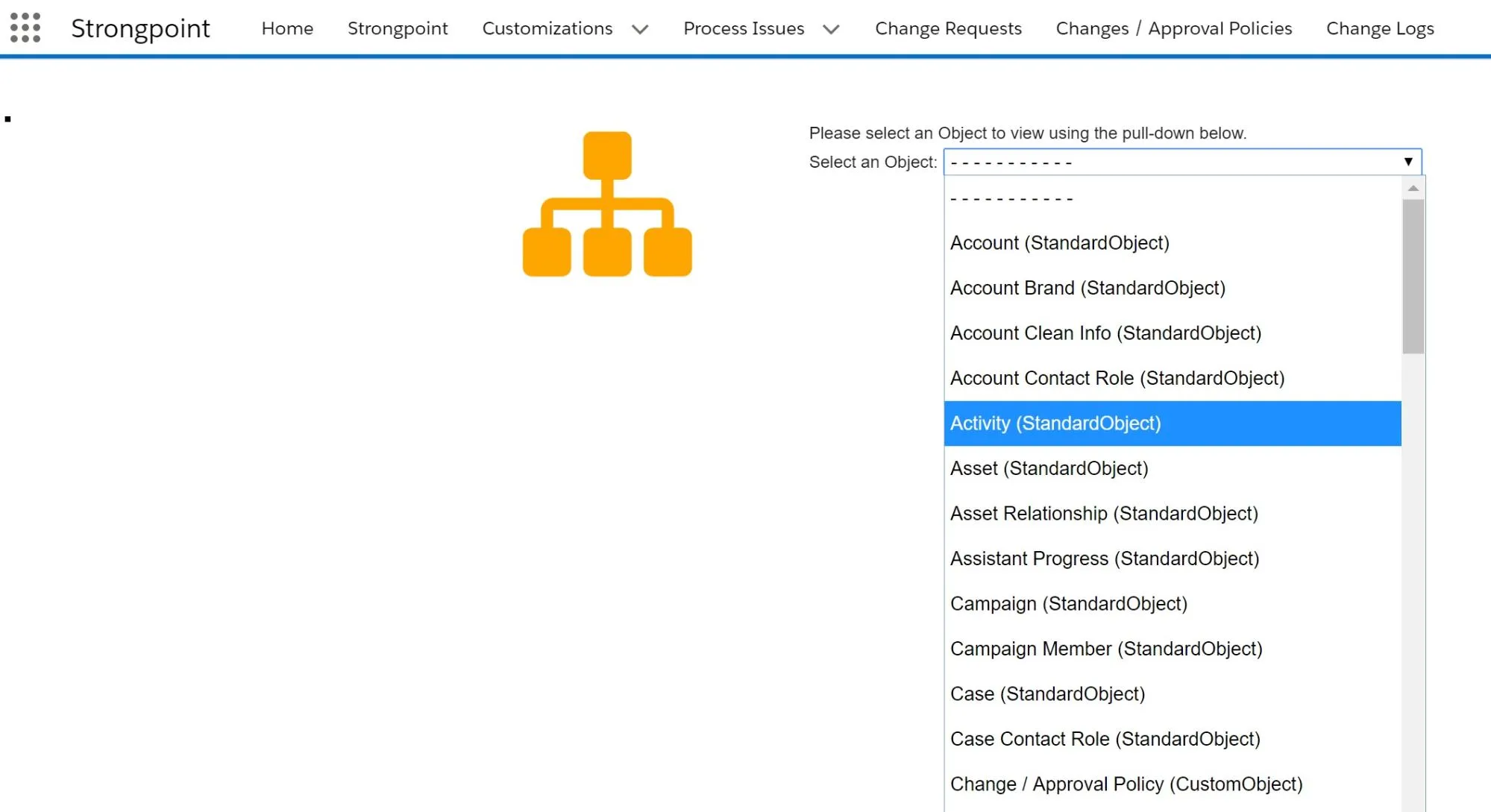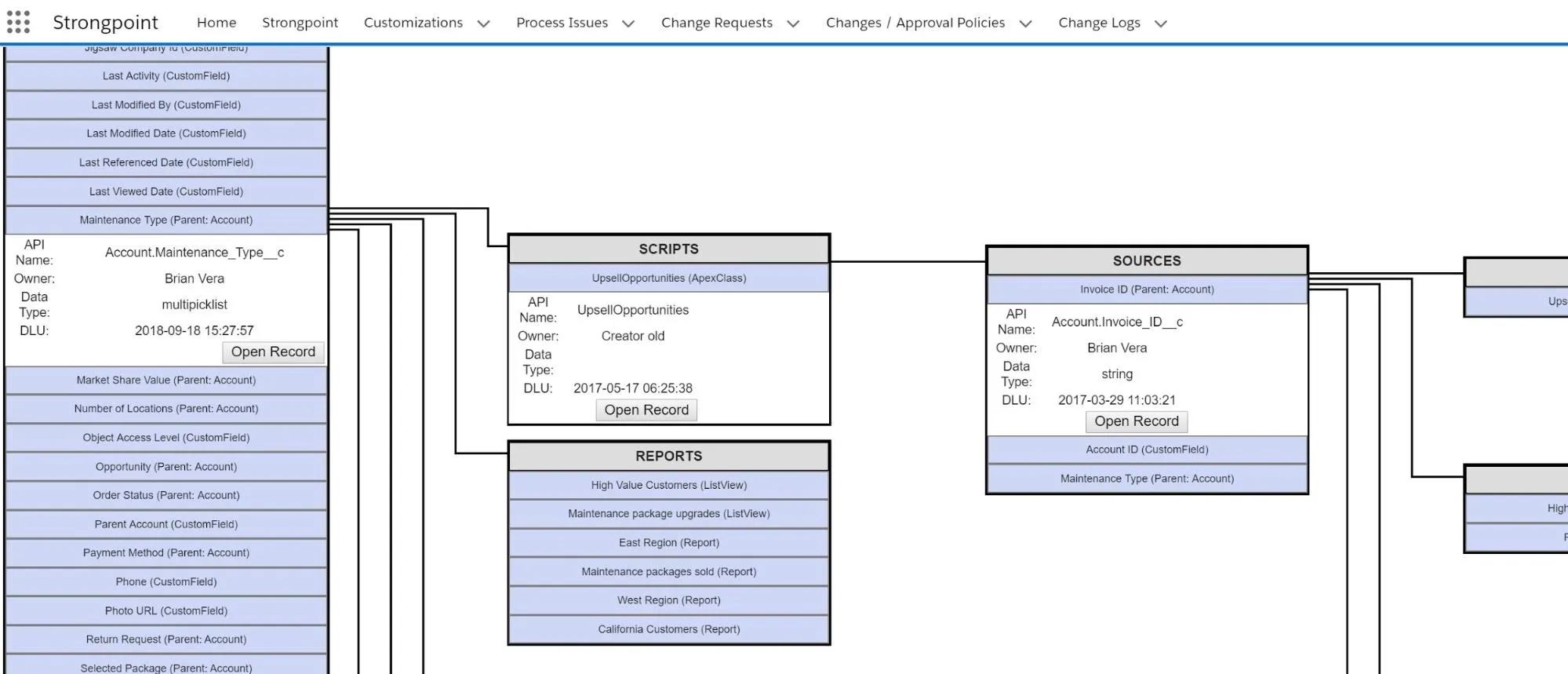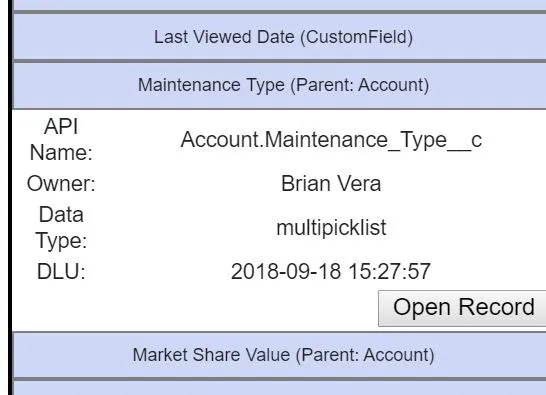Automated Documentation
Great documentation is easy with Platform Governance for Salesforce. Install the managed package in a sandbox or production org and start the scanners.Platform Governance for Salesforce continuously maintains automated digital documentation of each Salesforce org and provides easy to understand diagrams and clean up tools. You can print or export results for offline reference.
TIP
Learning About the Scanners: Review the Running the Scanner topic or reach out to the Customer Success team. It takes half an hour or so to get set up and on your way.
The scanning process is a function of size: smaller orgs index in only a few hours, while large orgs can take up to 5 days.
Platform Governance for Salesforce is a 100% native Salesforce App. Our records and code usage DO NOT count against your governance limits. Moreover, once the initial scan is complete, Platform Governance for Salesforce automatically updates documentation relating only to things that have changed, greatly reducing the amount of time required to scan.
Once your orgs are documented, understanding the downstream dependencies of any change is a straightforward, simple process. There are a number of ways to do this:
Dependency Relationship Diagram (DRD)
Customization Record
Finder
Object Exporter
Reports and List Views
Dependency Relationship Diagram (DRD)
The DRD is a graphical presentation of an object to help you visualize the dependencies.
-
The DRD can be launched from both the Home tab and the Tools menu. Open Netwrix Dashboard > Tools > Dependency Relationship Diagram, and select an object from the list.

From the Netwrix Dashboard tab, use the DRD Generator to launch the DRD for a particular Customization. You can search by Name or API Name.
-
Click an attribute to expand the metadata record and view all the dependencies. Drill down for details so you can fully understand the downstream dependencies.

-
The DRD exposes other critical metadata such as the Owner, API Name, Data Type, and Date Last Used (DLU). This data expedites clean up, enabling you to filter and group Customizations in List Views or Reports.

-
Click Open Record to open the full Customization Record with complete access to the detailed metadata and change history for the Customization.
PRO TIPS
- Read more about the Customization Record.
- Click Show/Hide Standard Fields to toggle displaying Standard Fields in the DRD.
Customization Record
The Customization record is the heart of Platform Governance for Salesforce’s automated documentation — all of the gathered metadata is organized into an easy to understand format. Each Customization record includes the information you expect from excellent documentation:
- What the customization is
- What it is part of
- What it depends upon
- What depends on it
- When it was last used
- Who owns it
- Who created it
- Other metadata to help change agents understand it, such as formulas, filters and API calls if relevant
If you have Intelligent Change Enablement, you also see:
- Change history
The tabs on each Customization record break out the information you need to fully understand the basic metadata, dependencies by type and change history (requires Intelligent Change Enablement or Enterprise Compliance license). Click Go To Record to open the actual Salesforce record for users with proper access. Customization records can be edited to assist in organizing records for clean up and optimization.
Here are five methods to access Customizations to explore:
- Open the DRD to get the object overview or investigate the fields on an object.
- Enter a Customization name in the main Search Salesforce bar. All Customization records are searchable and include the DRD tab.
- Customizations tab: Navigate like any other record to see different views, such as recently changed Customizations.
- Finder is another powerful tool for searching and visualizing relationships between Customizations.
- Create your own Dashboards, Reports and List Views to get exactly what you want. Platform Governance for Salesforce is a native Salesforce app, so you can use all your skills to create exactly what you need.
Finder
Finder is another flexible tool for understanding dependencies across objects. You can search for Customizations by:
- Text / API Name
- Creation Date
- Date Last Used (DLU)
- Creator / Owner
- Customization Type
You can Include or Exclude Package Customizations to filter your lists. Results can be exported in PDF or Excel formats.
Object Exporter
Object Exporter enables exporting information about entire objects, profiles or users into Excel for further research. Read more on Exporting Objects, Exporting Profiles and Exporting Users.
Reports and List Views
Platform Governance for Salesforce is fully built into Salesforce so you can take advantage our our libraries of List Views and Reports or build your own.
Next Technical Debt Topic: Change Monitoring